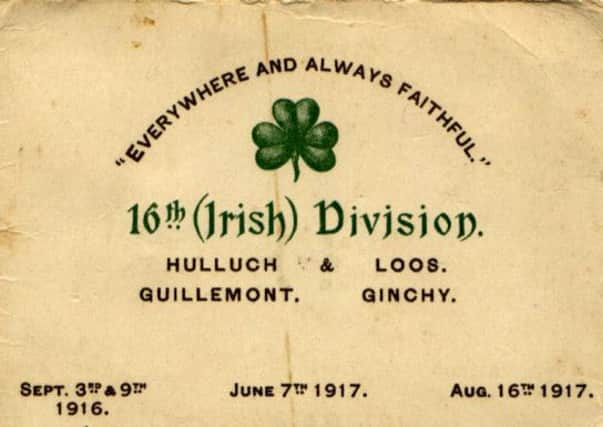Ballymena 1914 - Nationalists and the recruitment campaign


Many of these served with famous Regiments of yesteryear such as the Connaught Rangers, The Royal Munster Fusiliers and the well-respected ‘Dubs’ - the Royal Dublin Fusiliers.
Nationalists, for whom the establishment of an Irish ‘home rule’ parliament in Dublin had been the principal political aim for most of the 19th century, were committed to the war effort by their leader, John Redmond, in September 1914.
Advertisement
Hide AdAdvertisement
Hide AdThis was on the grounds that the necessary legislation had been passed (though in fact it was suspended for the duration of the war), and that the ‘freedom of small nations’ (such as Belgium or Serbia) was that of Ireland as well.
The plight of gallant, Catholic little Belgium, invaded by a militaristic aggressor, was disadvantageously compared with Ireland, achieving freedom (so Redmond argued) within the British Empire, rather like Canada or Australia.
Despite some jockeying for party advantage, a substantial proportion of the UVF enlisted to form the predominantly unionist and almost wholly Protestant 36th (Ulster) Division.
Nationalists, themselves mostly Catholic, joined the other two of Lord Kitchener’s ‘New Army’ divisions raised in Ireland: the 10th (Irish) and 16th (Irish) Divisions.
But Irishmen joined up for more than political reasons.
Advertisement
Hide AdAdvertisement
Hide AdSome were simply after adventure, like Tom Barry, later to become a noted IRA commander, who enlisted in June 1915 ‘to see what war was like, to get a gun, to see new countries and to feel like a grown man’.
For others there was an economic motive. James Connolly, the socialist revolutionary, said that employment opportunities were so bad in Ireland that men had no choice but to enlist. It was, he asserted, ‘economic conscription’. Certainly an unskilled worker might more than double his pay by joining up.
Not all nationalists followed John Redmond’s lead. A small minority of separatist republican radicals broke away and, believing the old nationalist adage that ‘England’s extremity is Ireland’s opportunity’, they began planning for a rebellion against British rule in Ireland.
At Easter 1916, led by James Connolly and Patrick Pearse, some 1,800 volunteers seized the General Post Office (GPO) and various other major buildings in Dublin, proclaimed an Irish republic, and held out for a week before overwhelming force obliged them to surrender.